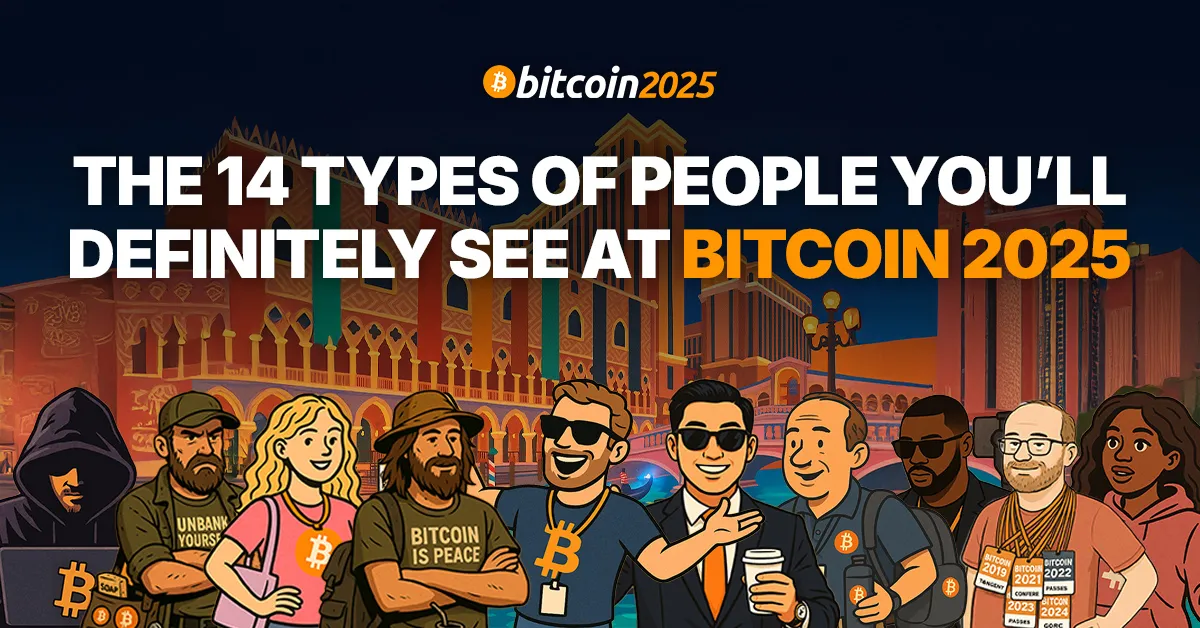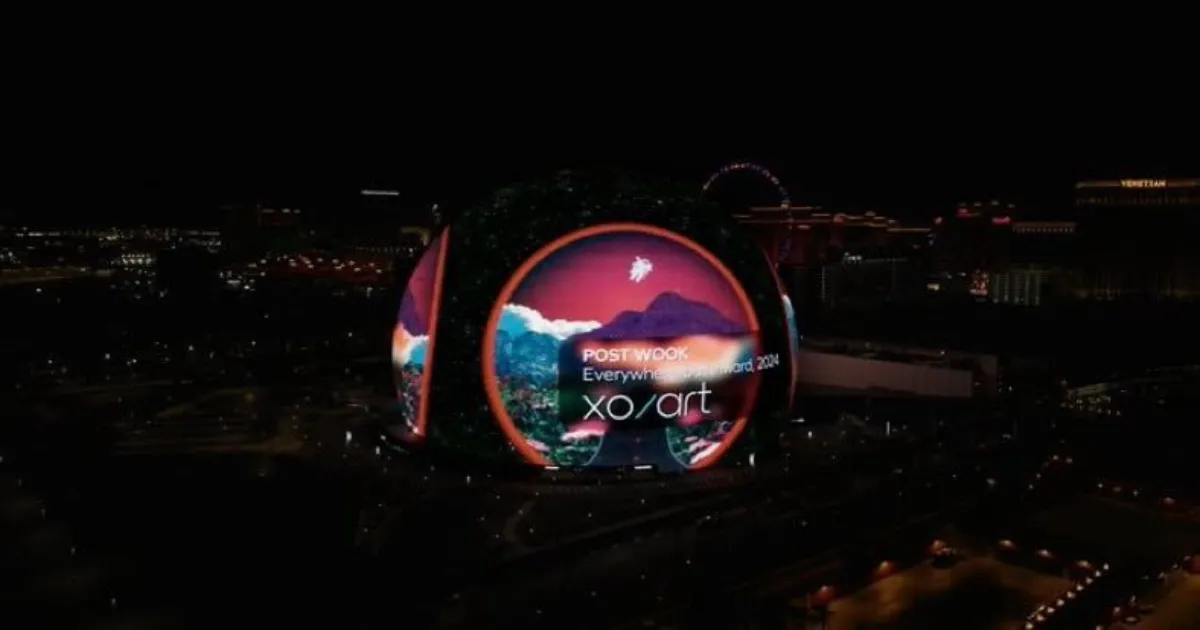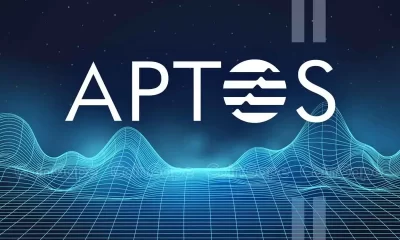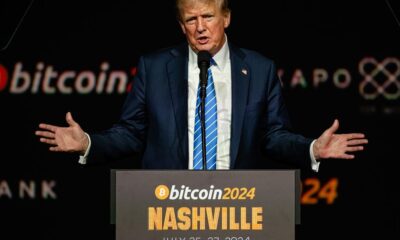Culture
A Nation of Individuals?
Published
5 months agoon
By
admin
It is the prospect of the sovereign individual that seems to most trouble the nation-state today. This odd threat perception has been the outgrowth of a political genealogy that, in the generations since the American Revolution, has increasingly come to equate the state with society while constellating the individual as the enemy of both. This equation would have been profoundly disconcerting to the founders of the American republic, who called forth a new national project precisely to preclude the abuses of an entrenched and predatory overclass—an aristocracy—that deemed itself the rightful custodian, in perpetuity, of the fate and best interests of a people. The political question animating America’s founders was, therefore: How can a people self-govern without creating a hereditary class of governors? How can sufficient tension, if not conflict, remain between state and society that the rule of law is preserved without becoming a prison?
The founders devised an ingenious solution to this problem based on a revolutionary premise: That the rights of the individual, not those of the state, are fundamental for a free society.[1] In other words, people have rights; governments do not have rights. Governments have powers, but only those powers that are explicitly delegated to them by the people they represent. Put more precisely, the people have the totality of enumerated and unenumerated rights, while the state has only those powers explicitly enumerated. Any actions taken by agents of the state outside of their enumerated powers are a usurpation of the people’s rights. The people must safeguard these explicit limits and can take the enumerated powers of the state back at any time.
In other words, the American founders reversed the dominant political assumptions in their cultural world: It was not the people who had to prove that they were deserving of rights, that they were innocent before the law, or that they had cleared themselves of inherited obligations to the state. Rather, it was the state that bore the burden of proof: That it was worthy of trust; that it had the power to take a particular action; that any person or entity was guilty under the law; or that its war powers should be exercised with the people’s blood and treasure. Concretely, this meant that during the era of the US Constitutional Convention, when the debate between the Federalists and Anti-Federalists raged, a formative consensus emerged that the American state would have no power of its own, no money of its own, and no army of its own. The American Constitution stipulated that all of these things would be effectively on loan from the people, in whom true sovereignty resided.

But things have changed profoundly since the Constitution was ratified. Not only did America establish a standing army quickly thereafter; that army has been engaged in almost unceasing warfare—over a hundred conflicts both foreign and domestic, declared and undeclared—since that time. While most Americans today would likely be familiar with the large-scale conflicts in which their nation has participated—the Revolutionary War, the Civil War, and two world wars, for example—they probably would be surprised by the majority of the wars in which the United States has been involved. During the nineteenth century, those wars were fought mostly against American Indian tribes as part of the push to colonize the West, while during the twentieth century they were waged predominantly against socialist and communist movements around the world. Twenty-first-century conflicts, in turn, have been prosecuted under the banner of the war on terror and, more recently, the containment of adversary nations. Although the Constitution grants Congress the sole power to declare war, in practice, Congress has only declared war in a few major conflicts: The War of 1812, wars against Mexico and Spain, and wars against particular belligerents in the First and Second World Wars. The rest have been waged through some form of unilateral executive action, whether by presidential decree or by the determination of military officers.
Just as the US government now seems to have its own army, it seems to have its own money. In 1913, Congress passed the Sixteenth Amendment, giving it the right to levy permanent income taxes on the American people; estate taxes, gift taxes, capital gains taxes, and corporate taxes followed soon thereafter, while other permanent forms of taxation have been introduced in the decades since. This money has since come to be widely referred to as “government revenue” rather than “the people’s money.” But the federal government does not confine its spending to the people’s money; rather, it borrows extensively, supporting a ballooning administrative state whose agencies are so numerous and ill-defined that there is no authoritative reference for exactly how many there are. The Federal Register, the Online Federal Register, the US Government Manual, the Sourcebook of United States Executive Agencies, the Unified Agenda of Federal Regulatory and Deregulatory Actions, FOIA.gov, and USA.gov all list widely differing numbers and definitions of agencies.[2],[3] These agencies function as both rulemaking and rule-enforcing bodies, collapsing all three branches of government (legislative, executive, and judicial) into one in their own operations. This eliminates the checks and balances that the authors of the Constitution put in place to constrain the power of the state, subjecting the American people to a growing thicket of laws that they have had no part in making and have no electoral capacity to alter or repeal. As a result, an illusion is created that the government has its own power.
But while military conflict, taxation, and bureaucratic rule are all visible manifestations of the power of the state, they are underpinned by a platform that seems so normal and ubiquitous today that it largely goes unnoticed: A financial system in which central banks issue and manage the supply and price of unredeemable fiat currencies. These currencies serve as the base money that commercial banks, in turn, use as reserve assets to make loans. Commercial banks and central banks around the world form a network of financial intermediaries who share with each other information about every transaction that passes through their networks—which is also shared with the military, intelligence, and policing agencies of governments and intergovernmental organizations worldwide. Government’s gaze into the economic activity of every person and organization anywhere in the world is effectively unconstrained by any privacy laws or constitutional provisions regarding search and seizure of assets. This alliance between banking power and policing power took hold during the early twentieth century in what can be called the Banker Revolution—a revolution so successful that few are even aware it happened.
The Satoshi Papers, a project by The Texas Bitcoin Foundation and edited by Natalie Smolenski, will be available for pre-order on November 19th in paper back and limited Library edition.
[1] Thomas Jefferson’s original draft of the Declaration of Independence read “We hold these truths to be sacred & undeniable; that all men are created equal & independent [emphasis added], that from that equal creation they derive rights inherent & inalienable, among which are the preservation of life, & liberty, & the pursuit of happiness.” See Thomas Jefferson, “Image 1 of Thomas Jefferson, June 1776, Rough Draft of the Declaration of Independence,” Library of Congress, https://www.loc.gov/resource/mtj1.001_0545_0548/?sp=1.
[2] Clyde Wayne Crews, “How Many Federal Agencies Exist?” Forbes, July 5, 2017, https://www.forbes.com/sites/waynecrews/2017/07/05/how-many-federal-agencies-exist-we-cant-drain-the-swamp-until-we-know/?sh=535830391aa2.
[3] Molly Fischer, “What Is a Federal Agency?” Federal Agency Directory, Louisiana State University Libraries, March 28, 2011, https://web.archive.org/web/20130518150541/http://www.lib.lsu.edu/gov/fedagencydef.pdf.
Source link
You may like


Bitcoin Price Holds Steady, But Futures Sentiment Signals Caution


Panama City Approves Bitcoin And Crypto Payments For Taxes, Fees, And Permits


Crypto Trader Says Solana Competitor Starting To Show Bullish Momentum, Updates Outlook on Bitcoin and Ethereum


weakness signals move toward lower support


Now On Sale For $70,000: The World’s First Factory Ready Open-Source Humanoid Robot


What Next for ETH as Traders Swap $86M into Solana DeFi protocols ?
Culture
How Academia Interacts With The Bitcoin Ecosystem
Published
16 hours agoon
April 16, 2025By
admin
At the MIT Bitcoin Expo earlier this month I had the opportunity to sit down and talk with Neha Narula, the Director of the Digital Currency Initiative under the MIT Media Lab.
Neha previously studied at MIT, completing her PhD in 2015. Her research and work has tended to focus on distributed systems and databases, with many contributions involving analysis of the potential shortcomings and risks of Central Bank Digital Currencies (CBDCs).
She previously worked on relaunching the news aggregation platform Digg, and worked at Google as a senior software engineer, where she designed Blobstore, a scheme for redundant replication and delivery of massive amounts of data.
We discussed the history of the MIT DCI and its role in the history of Bitcoin development in research, as well as the role of academic research in general as it relates to Bitcoin and cryptographic or blockchain systems.
You can watch the interview here:
Source link
conference
The 14 Types Of People You’ll Definitely See At Bitcoin 2025
Published
5 days agoon
April 12, 2025By
admin

Loud. Friendly. Huggy. The Bitcoin Bro is your hype man for hyperbitcoinization. He doesn’t know what “joules per terahash” means, but he’s onboard for the vibes and will yell “Buy the dip!” during your panel Q&A.
They party hard, orange-pill harder, and are basically Bitcoin’s version of a frat brother with a bull market pump tattooed on his calf.


Slicker than a fresh seed phrase, this guy’s teeth are whiter than your Lightning wallet. He’s rented a Lambo for the afternoon and drops your first name way too often, like he’s trying to sell you a time-share in the metaverse.
He doesn’t care about decentralization. He cares about gains, baby. And tailoring. Always with the tailoring.

The apocalypse isn’t a threat—it’s a plan. This dude hasn’t touched fiat since 2018 and bathes in non-KYC sats. He’s already learned to make his own soap and catch fish from nearby lakes and streams.
He’s not paranoid. He’s prepared.


Lives in a van. Pays for tacos with lightning. Might be hiding from the IRS (but only spiritually). They believe Bitcoin is peace, man. And also chaos. And also freedom.
Will fix your flat tire in exchange for a hammock spot and a cold yerba mate.

The unsung hero of Bitcoin. Speaks only in thermodynamic math and SATA cable specs. Makes ASIC firmware upgrades look like wizardry, but can’t explain what he does to his mom without her crying.
Definitely knows the precise BTU-to-wattage ratio for his off-grid, solar-powered mining container. Definitely doesn’t know what “small talk” means.


Yes, plural. Yes, anonymous.
They don’t want to talk to you. They don’t want to be on your podcast. They don’t even want you to know they’re here. Ask them when something will be done and you’ll get the sacred prophecy: “Two weeks.”
They are the shadowy super coders that Elizabeth Warren warned you about—hunched over ThinkPads, pushing protocol upgrades that will quietly redefine monetary history. You won’t recognize them. That’s by design.

Armed with a gimbal and a dream. Their camera roll is 80% memes, 20% selfies with CEOs. Some are here to spread the signal. Some are here for the clout. All are uploading something right now.
Will say “Let’s run it back!” at least 17 times a day.

You’ll spot him by the gravity-defying stack of laminated badges swinging from his neck like a wearable timeline. He doesn’t say much—he lets the passes do the talking. Each one’s a badge of honor. Each one says: I was there.
He’s not here to attend panels—he’s here to assert conference dominance.


Branded polo. Branded backpack. Branded soul. You don’t even know how you ended up holding his business card. He’s not here to network—he’s here to execute. He moves in packs, wears his lanyard like a badge of honor, and will be back at the booth precisely 15 minutes after lunch.
Doesn’t talk about Bitcoin. Is Bitcoin.

Old-school finance dudes who smelled the smoke from Wall Street and headed toward the orange glow. Calm. Calculated. Dollar cost averaging into the sunset.
They don’t shill. They don’t yell. They just quietly stack and nod wisely at panels.

Sleeps 3 to a hotel room and burned half their Series A to get to Vegas. They’re pitching a new Lightning wallet-slash-social network-slash-AI market prediction engine and just need one person to believe in them.
Respect the hustle.


God bless them. They’ve been standing next to their Bitcoin-obsessed partner for three straight days, pretending to understand mining pool fee structures and nodding politely through 5-hour dinner debates.
They are the backbone of the conference. The true MVPs. Probably counting down the minutes to the spa.

Not who you think. No Gucci belts. No megaphones. Just quiet confidence, a phone permanently in hand, and a passive stake in something that’s quietly revolutionizing finance.
Some got lucky. Some built empires. All will ignore your pitch deck.

The rarest sighting of all: A woman. Yes, they exist. Yes, they know more than you. And yes, they’re already five steps ahead of your “Have you heard of Bitcoin?” icebreaker.
Bonus: They’ll probably be the ones explaining immersion cooling to you.
One Event. Endless Energy. Absolute Chaos.
Bitcoin 2025 is more than a conference. It’s a decentralized carnival of code, conviction, and characters. Whether you’re here to build, learn, chill, or meme—there’s a place for you in the movement.

This article was inspired by the video “The People of Bitcoin 2022 Miami Conference” by SPACE DESIGN WAREHOUSE. We acknowledge and appreciate the original creative concept, which served as a foundation for this updated and expanded interpretation for Bitcoin 2025. We encourage readers to view the original video and support the creator on YouTube.
At Bitcoin Magazine, we believe in the power of open-source ideas—because great content, like great code, is better when it’s built together. If you have something you’d like to see featured—whether it’s a video, meme, sketch, or spicy take—send it our way at [email protected]. If we use it, we’ll give you credit in the article and share your work with the broader Bitcoin community.
Source link
Culture
Surreal And Immersive Art On Bitcoin & The Future Of Digital Expression
Published
2 weeks agoon
April 3, 2025By
admin
As the Bitcoin Conference 2025 approaches, set for May 27-29th at the Venetian in Las Vegas, digital artist Post Wook—known for her surreal, psychedelic landscapes that merge cosmic and natural elements—is set to bring her latest series, “The Astronomer’s Daughter” to a large audience of bitcoiners. In tribute to her father, a long-time NASA employee, this ordinals series uniquely merges satellite data and bitcoin block times, alongside seasonal and astronomical patterns such as the phases of the moon. Post Wook will showcase this work as part of both B25 and the off-site ordinals event, Inscribing Vegas.
I caught up with Post Wook to discuss her latest digital art series, the future of immersive art, and the experience of seeing her work featured on the Sphere in Las Vegas.

The Las Vegas Sphere has quickly become the principal attraction on the Las Vegas Strip. What was it like to see your artwork, “Everywhere but Inward,” displayed on the Sphere for the first time?
It honestly felt very surreal! Having worked on the piece for over a year, I was super familiar with the animation sequencing, but seeing it actually on the Sphere for the first time felt so cool. The Sphere is LARGE, and you think you know that when you see photos, but then when you see it in real life it blows you away. We got to our lookout spot in Vegas about 15-20 min before it popped up in the programming, and once it actually came on it felt so wild! I think I started clapping. I never do that. I was just so happy to be in the moment.
The Sphere is one of the world’s largest and most sophisticated immersive platforms, featuring a 16K resolution interior and an exterior LED display that spans over 580,000 square feet. How does the scale of the Sphere’s surface affect the viewer’s perception of your digital artwork? You’re no stranger to fantastical landscapes or extra-perceptionary vistas, so this must have been especially interesting to take in.
The actual process of animating Everywhere but Inward, 2024 for Sphere was interesting because with a screen that big the animation had to be a lot slower than I’d normally animate. So honestly, watching the animation as an equirectangular piece on my monitor felt like watching paint dry. But watching it on Sphere, it feels like a regular animation. I guess that’s just showbiz.
On the whole I’m just excited to see digital art take center stage. With Sphere in Vegas becoming literally the talk of the strip to the new Sphere they’re building in Dubai, it’s pretty obvious that digital art is on the rise and is becoming increasingly legitimate to the world around us.
The ephemeral nature of a public display on the Sphere contrasts with the permanence and immutability of on-chain art. How do you view the tension between the grandeur of public spectacle and the private, immutable ownership of digital art? Does this shift in how art is owned and experienced influence your approach to creating and presenting your work?
I sort of look at it like ‘exterior’ and ‘interior’ work with Sphere showing people that digital art is cool and on-chain art reinforces that digital art is valuable. The public spectacle brings people in and on-chain ownership provides traceable provenance. I’d like to think I balance that tension well. By having licensed work in Target and auctions in Sotheby’s, I’m able to find solace in providing art at every level because I really believe art is for everyone, and everyone deserves a little bit of POST WOOK finery in their lives.
On the other hand, on-chain art has broken open the door for me to become a mad scientist for my ‘upper end’ artwork by creating art that uses blockchain as a medium, and honestly it’s become some of my favorite art to make. I’ve always had a soft spot for research, so being able to combine complex data sets and my creativity feels like a dream. To off-chain people, I like to explain this work sort of like the photographs from Harry Potter, except instead of using magic to animate the images, we use code and blockchain.
I find it even cooler that I get to sit down with collectors that share my same data-driven interests and chat about the future of digital art. I honestly have to pinch myself sometimes because I feel like I truly have the best of both worlds with creating meticulously detailed on-chain art and aesthetically pleasing retail art.
Tell us more about “The Astronomer’s Daughter” series, and what can Bitcoin Conference or Inscribing Vegas attendees expect to see from this series in May? I heard a rumor that your dad might be making the trip.
The Astronomer’s Daughter has sort of become my favorite little brainchild, and it’s been really fun to watch it blossom. It’s a collection that honors my dad’s legacy working for NASA through the blended use of satellite data and my artistic style. I chose 100 rare satoshis with varying levels of astronomical and on-chain significance to showcase what happened in space that day.
Of all the various components, the moon phases are accounted for as the moon displayed in each image, the constellation the moon passes through is represented by the color of the sky, any planets close to earth are displayed accordingly, the month and the season are shown as the landscape in the image, solar holidays (equinoxes and solstices) are recorded, and there’s a chromatic filter on top of every image based on the year of the satoshi to tie it all together.
Each piece is then pulled together using recursion and inscribed directly on the satoshi that the artwork represents.
In May, I’m debuting five (5) physical shadow boxes of select pieces from The Astronomer’s Daughter to showcase each layer of the artwork, acting almost as a physical representation of each recursive element. These pieces will be on display in the Bitcoin Conference Las Vegas, and they’ll be a sight to see! And yes, Father Wook might even be there but I don’t want to give too much away – people will have to come see for themselves!
See Post Wook’s artwork at both Bitcoin Conference Las Vegas and Inscribing Vegas. Tickets for these events, along with access to a full range of after parties, are available as part of the Bitcoin Week bundle here: https://b.tc/conference/2025/bitcoin-week.

Source link

Bitcoin Price Holds Steady, But Futures Sentiment Signals Caution

Panama City Approves Bitcoin And Crypto Payments For Taxes, Fees, And Permits

Crypto Trader Says Solana Competitor Starting To Show Bullish Momentum, Updates Outlook on Bitcoin and Ethereum

weakness signals move toward lower support

Now On Sale For $70,000: The World’s First Factory Ready Open-Source Humanoid Robot

What Next for ETH as Traders Swap $86M into Solana DeFi protocols ?

Why Did Bitcoin Price (BTC) Fall on Wednesday Afternoon

Solana price is up 36% from its crypto market crash lows — Is $180 SOL the next stop?

Solana Retests Bearish Breakout Zone – $65 Target Still In Play?

How Expanding Global Liquidity Could Drive Bitcoin Price To New All-Time Highs

Apple Delists 14 Crypto Apps in South Korea Including KuCoin and MEXC Exchanges Amid Regulatory Crackdown

Athens Exchange Group eyes first onchain order book via Sui

Futureverse Acquires Candy Digital, Taps DC Comics and Netflix IP to Boost Metaverse Strategy
Court Grants Ripple And SEC’s Joint Motion To Suspend Appeal

AVAX Falls 2.1% as Nearly All Assets Trade Lower

Arthur Hayes, Murad’s Prediction For Meme Coins, AI & DeFi Coins For 2025

Expert Sees Bitcoin Dipping To $50K While Bullish Signs Persist

Aptos Leverages Chainlink To Enhance Scalability and Data Access

Bitcoin Could Rally to $80,000 on the Eve of US Elections

Crypto’s Big Trump Gamble Is Risky

Institutional Investors Go All In on Crypto as 57% Plan to Boost Allocations as Bull Run Heats Up, Sygnum Survey Reveals

Sonic Now ‘Golden Standard’ of Layer-2s After Scaling Transactions to 16,000+ per Second, Says Andre Cronje

3 Voting Polls Show Why Ripple’s XRP Price Could Hit $10 Soon

Ripple-SEC Case Ends, But These 3 Rivals Could Jump 500x

Has The Bitcoin Price Already Peaked?

The Future of Bitcoin: Scaling, Institutional Adoption, and Strategic Reserves with Rich Rines

A16z-backed Espresso announces mainnet launch of core product

Xmas Altcoin Rally Insights by BNM Agent I

Blockchain groups challenge new broker reporting rule

I’m Grateful for Trump’s Embrace of Bitcoin
Trending

 24/7 Cryptocurrency News5 months ago
24/7 Cryptocurrency News5 months agoArthur Hayes, Murad’s Prediction For Meme Coins, AI & DeFi Coins For 2025

 Bitcoin3 months ago
Bitcoin3 months agoExpert Sees Bitcoin Dipping To $50K While Bullish Signs Persist

 24/7 Cryptocurrency News3 months ago
24/7 Cryptocurrency News3 months agoAptos Leverages Chainlink To Enhance Scalability and Data Access

 Bitcoin5 months ago
Bitcoin5 months agoBitcoin Could Rally to $80,000 on the Eve of US Elections

 Opinion5 months ago
Opinion5 months agoCrypto’s Big Trump Gamble Is Risky

 Bitcoin5 months ago
Bitcoin5 months agoInstitutional Investors Go All In on Crypto as 57% Plan to Boost Allocations as Bull Run Heats Up, Sygnum Survey Reveals

 Altcoins3 months ago
Altcoins3 months agoSonic Now ‘Golden Standard’ of Layer-2s After Scaling Transactions to 16,000+ per Second, Says Andre Cronje

 Ripple Price4 weeks ago
Ripple Price4 weeks ago3 Voting Polls Show Why Ripple’s XRP Price Could Hit $10 Soon


